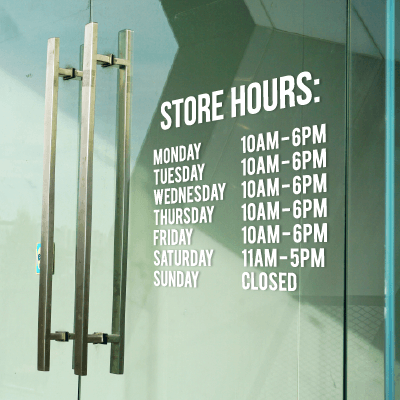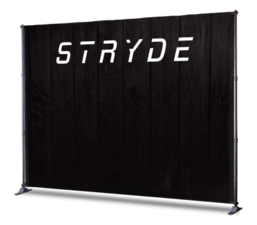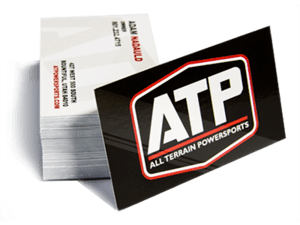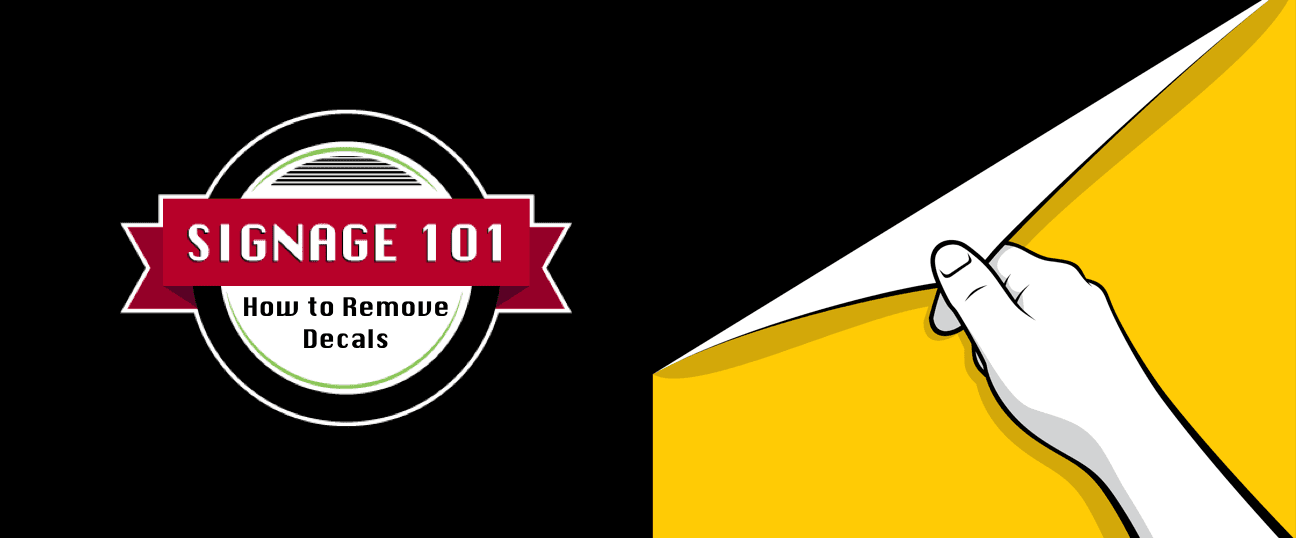Decals can often be difficult to remove. When it comes to removing decals, there are a number of factors to consider. The three most important are the type of decal, the surface to which the decal is applied, and how long the decal has been applied to that surface. Each one of these factors will affect how you go about removing your decal. Some decals require extensive work to be removed, while others can be removed by simply peeling them off of the surface with your fingers. It is important to note that some decals cannot be removed without leaving permanent damage.
Types of Decals
First, let’s talk about the different types of decals. There are various types of decals: window decals, car/vehicle decals, vinyl lettering, and permanent decals just to name a few. Window decals and vinyl lettering are often removed by just peeling away from the surface and washing the residue with a damp and soapy cloth. Vehicle decals and permanent decals are often more difficult to remove and require more work.
As mentioned above, some decals can’t be removed without leaving permanent damage. An example of this is a permanent decal that has been applied to a fragile surface such as a painted wall. A permanent decal is meant to be permanent and should only be applied on surfaces where it is meant to stay. Permanent decals will remove paint, cement, wallpaper, and just about whatever else they’re attached to.
Surface
Second is the surface to which the decal is applied. Decals are the easiest to remove from windows and other hard and smooth surfaces such as metal, glass, and plastic. Decals can often be easily removed from cars and other vehicles without damaging the paint. Vinyl lettering, which often has a low adhesive compared to other decals, is the easiest to remove regardless of surface. As a result, they are often applied to more delicate surfaces such as wallpaper and painted surfaces.
Time
Third is the amount of time the decal has been applied on the surface. It goes without saying that the longer a decal is applied to a surface, the harder it is to remove. Decals that were recently applied can often be peeled away. Whereas decals that have been applied for over a year can require more work. When a decal is left for a long period of time on a surface the adhesive will cure and harden making a firm bond between the paper or vinyl of the decal and the surface.
With the exception of permanent decals, the following steps can be used to remove just about any decal:
-
Peel the decal
Before anything else, try peeling away the decal with your fingers and/or a plastic credit card. A credit card can be used by wedging it between the decal and the surface and continuing to slide it between the two. Slight, consistent pressure with a back and forth motion will often prove effective. Avoid using a razor or sharp edge as it can damage the surface. Oftentimes decals can simply be peeled away without tearing, making your job much easier. If this is the case, skip to step 3
-
Heat up the decal
If the decal constantly tears or is too stuck to remove with your fingers and/or keeps tearing, use a blow dryer to heat up the decal. The heat from the blow dryer will help loosen the adhesive making it less sticky. If you don’t have a blow dryer, you may use hot water (Assuming the surface won’t be damaged with water). Refrain from using a heat gun as it can damage the paint or surface. Once heated, the decal may be more easily removed.
-
Remove the residue
Once the decal is removed, there will probably be some residue left from the adhesive. Some residue can be removed with a damp, soapy cloth and others may require a removing agent such as rubbing alcohol or Goo Gone. Simply dampen a cloth with the removing agent and begin by gently rubbing away at the residue, increasing pressure as needed.
-
Wash the surface
The fourth and final step is to clean the surface with a damp cloth and dry it, removing any excess residue or dirt.
Following these steps should allow you to remove just about any decal. When buying your decals and installing them, it is important to take into consideration the three factors we talked about above. If you plan on removing your sticker in the near future, avoid decals that are more permanent in nature, and/or apply them to surfaces where they will be easier to remove. You might also consider non-adhesive decals such as window clings, which can be removed and reused without any residue. Looking to buy a decal, but not sure which one? Check out this blog post to find out which decal is right for you.
Related Articles
Floor Decals For Every Setting.
Vinyl Lettering vs Wall Decals – Signage 101.
Designing Your Own Custom Wall Decals.




































